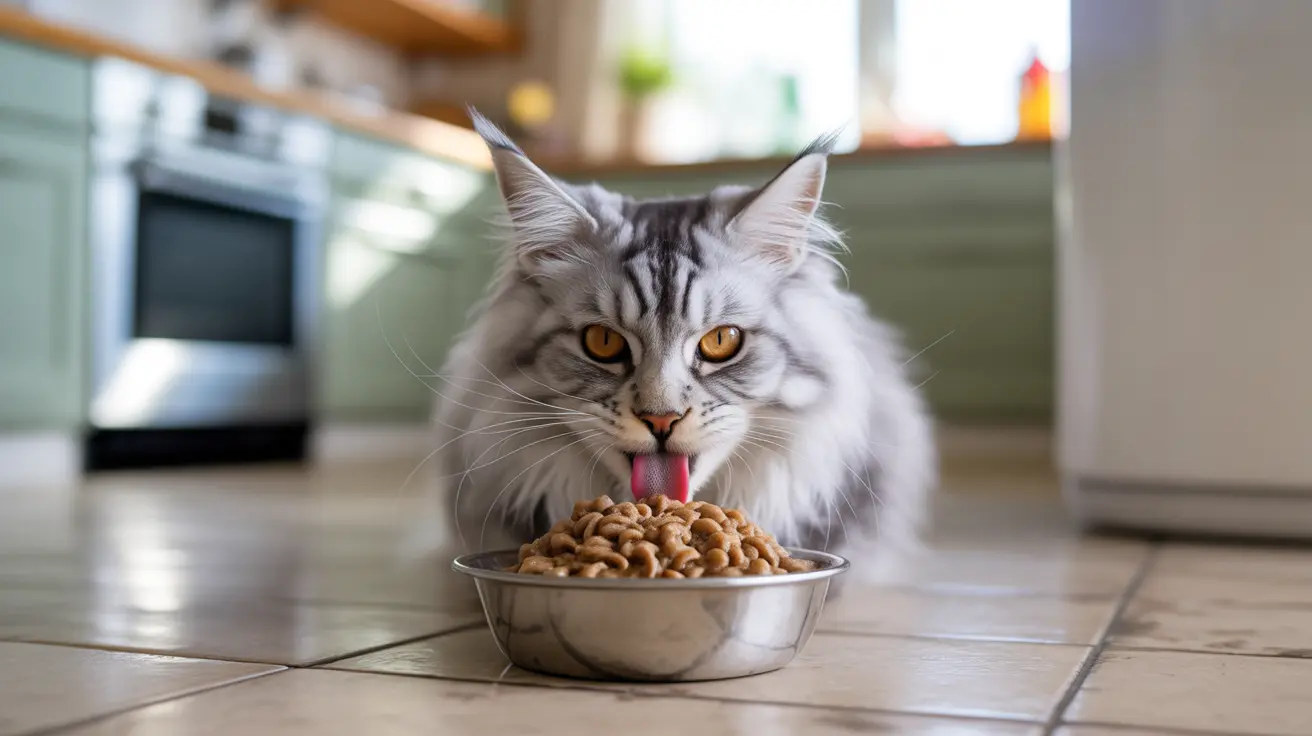Understanding Basic Wet Food Portions
The general guideline for feeding wet food to cats is approximately 3 ounces of food per 3.5 pounds of body weight daily. For an average 10-pound adult cat, this translates to about three 3-ounce cans per day. However, this is just a starting point, as individual needs can vary significantly.
Most commercial wet cat foods contain about 70-80% moisture and approximately 90 calories per 2.5-ounce can. Understanding these numbers helps you make more informed decisions about portion sizes.
Calculating Your Cat's Individual Needs
Weight and Activity Level Considerations
Active cats typically need more calories than sedentary ones. A lean, active 10-pound cat might need up to 3 cans daily, while an overweight cat of the same size might only need 2.5 cans. Always monitor your cat's body condition and adjust portions accordingly.
Life Stage Requirements
Kittens, pregnant cats, and nursing mothers have higher caloric needs:
- Kittens: Up to 3.5 cans per day for a 5-pound kitten
- Pregnant cats: 25-50% more than regular adult portions
- Nursing mothers: Up to double their regular portions
Feeding Schedule and Storage
Most veterinarians recommend dividing daily wet food portions into 2-3 meals. Never leave wet food out for more than 30-60 minutes, as it can spoil quickly and harbor bacteria. Refrigerate unused portions and warm them to room temperature before serving.
Mixed Feeding Considerations
If you're combining wet and dry food, reduce wet food portions accordingly. A common approach is:
- 75% wet food / 25% dry food
- 50% wet food / 50% dry food
- 25% wet food / 75% dry food
Adjust these ratios based on your cat's preferences and needs while ensuring total daily caloric requirements are met.
Signs You're Feeding the Right Amount
Monitor these indicators to ensure proper feeding:
- Maintaining ideal body weight
- Regular energy levels
- Healthy coat condition
- Normal bathroom habits
- No begging between meals
Frequently Asked Questions
How much wet food should I feed my adult cat based on its weight?
Feed approximately one 3-ounce can per 3-3.5 pounds of body weight daily. For example, a 10-pound cat needs roughly three 3-ounce cans per day. Adjust based on activity level and body condition.
How do I adjust wet food portions for overweight or senior cats?
Reduce portions by 20-30% for overweight cats and monitor weight loss progress. Senior cats typically need fewer calories, so reduce portions by 10-20% while maintaining protein levels. Consult your vet for specific recommendations.
Can I mix wet food with dry kibble, and how do I calculate the right combined portions?
Yes, you can mix both. Calculate your cat's total daily caloric needs, then divide it between wet and dry food. For example, if your cat needs 250 calories daily and you want a 50/50 split, provide 125 calories from each type.
How often should I feed my cat wet food daily, and how long can it safely sit out?
Feed 2-3 times daily for adult cats. Remove uneaten wet food after 30-60 minutes to prevent bacterial growth. Refrigerate unused portions and warm to room temperature before serving.
What factors should I consider when choosing the amount of wet food for kittens, pregnant, or nursing cats?
Kittens need more frequent meals (3-4 times daily) and higher calories for growth. Pregnant cats need 25-50% more food in the final weeks of pregnancy. Nursing mothers may need up to double their regular portions. Always consult your veterinarian for specific recommendations.
Conclusion
Finding the right amount of wet food for your cat requires careful consideration of their age, weight, activity level, and overall health. Start with the recommended portions and adjust based on your cat's needs and response. Regular weigh-ins and veterinary check-ups will help ensure your feeding plan keeps your cat healthy and satisfied.






